Reviews
Frederick Wiseman
USA, 1967
Credits
Review by Rumsey Taylor
Posted on 03 June 2008
Source 16mm print; Zipporah Films DVD
Categories Frederick Wiseman
The Supreme Judicial Court of Massachusetts has ordered that “A brief explanation shall be included in the film that changes and improvements have taken place at Massachusetts Correctional Institution Bridgewater since 1966.”
The above disclaimer comes at the end of Titicut Follies, Frederick Wiseman’s first film, which debuted at the 1967 New York Film Festival. It was banned from distribution shortly thereafter, the start of what would become decades of tension between Wiseman and the Massachusetts state jurisdiction.
The film finds the Bridgewater correctional facility (descriptively both a prison and hospital) to be an austere place: the guards and doctors seem casually close-minded in their responsibilities and diagnoses; the patients, most of them vulnerably unclothed, inhabit barren rooms with only a frumpy mattress on the floor. The facility seems so oppressive one questions the propensity for anyone to be properly rehabilitated therein. It is this aspect of oppression, I presume, that encouraged the film’s controversy within Massachusetts. Bridgewater looks more like a dungeon than a governmental institution, its architecture industrialized, barren, and grimy. The atmosphere is one of distress.
The film may have inspired reform, as the above disclaimer denotes, but what’s curious about this is how the Massachusetts Supreme Judicial Court actively sought to suppress Titicut Follies, strong-arming the film with such jurisdictional prowess so as to render the court’s reconciliatory acknowledgement of the crimes at Bridgewater hypocritical and knowingly inadequate. They’re more concerned with the lurid depiction of Bridgewater rather than the questionable treatment it deployed.
The notion of “depiction” in a Wiseman film is largely beside the point. Although the film has a pioneering intimacy - so intimate that in the forty years since its release I cannot cite any other films with as unprecedented access to a prison - the camera doesn’t seem coercive. Only the patients look into the camera, their bodies, nude, wrought with catatonia, but with eyes that urgently distill a need for sympathy. Wiseman’s intent is not to depict but to confirm, and his film possesses moments of disarming cinematic serendipity: a patient is given a shave, and the practitioner is so indelicate (he razes too hastily up and down the patient’s beard) he cuts the patient’s lip, a fresh trough of blood mixing with the shaving cream. The patient doesn’t even grimace, signaling that the wound is no more harmful than anything else he must endure on a daily basis.
This is a literal example, however—the film is more properly characterized by a tangible undercurrent of psychological distress. The same prisoner/patient is escorted back to his cell (badgered with questions as to whether he’ll keep it clean, his responses growing louder and more agitated), and the composition isolates his knuckles, which are scabbed over on each hand. His cell is like the others, empty, except for the streaks of blood discernable on the walls. The prisoner grimaces straight at you before the cut.
The film’s most infamous sequence involves a force-feeding, and it’s notable for several reasons—foremost that the receiver of this treatment is given an option to digest the food on his own. He is asked several times, and he has no response, standing there, not determinedly but blankly, totally catatonic. He is forcibly held down on a table, and a psychologist needles a tube through his nostril; it is threaded the length of his esophagus. To the viewer - even, remarkably, a contemporary one - this sequence is horrifying for what it presents, and this horror is enhanced by the psychologist’s casualness—that, and the lit cigarette that never leaves his lips, its ash growing more and more precarious before the funnel in which the patient is siphoned a liquid meal. In no other image in this film is the threat of contamination more lucidly illustrated.
The sequence culminates unlike any other in the film—it’s intercut with images of a corpse being embalmed. It’s not clear whether this is the same patient as the one held, by five other men, to a table as he ingests food through his nostril (my assumption is that it is the same man), but nonetheless Wiseman, in a rather uncharacteristic display of directorial imperative, is communicating that such treatment will not result in rehabilitation.
The title derives from a vaudeville show performed by both the guards and patients, the footage from which bookends and is interspersed throughout the film. There is singing and choreography, and everyone involved seems like he’s having fun (one of the patients, after his performance ends, bows excitedly and repeatedly). Despite this sense of community and happiness, these “follies” are no different than what we’ve already seen, actions intending to ensure comfort in a place in which it is virtually inaccessible.
More Frederick Wiseman
-
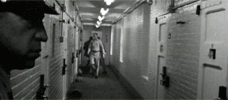
Titicut Follies
1967 -
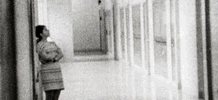
High School
1968 -

Law & Order
1969 -

Basic Training
1971 -

Juvenile Court
1972 -
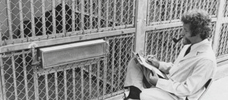
Primate
1974 -

Welfare
1975 -
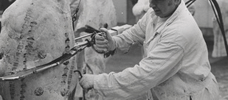
Meat
1976 -

Sinai Field Mission
1978 -

Manoeuvre
1979 -

Model
1980 -

The Store
1983 -

Blind
USA -

Adjustment & Work
1986 -

Missile
1987 -

Central Park
1989 -

Near Death
1989 -

Aspen
1991 -

Zoo
1993 -

High School II
1994 -

Ballet
1995 -

La Comédie-Française
1996 -

Public Housing
1997 -

Belfast, Maine
1999 -

Domestic Violence / Domestic Violence 2
2001 / 2002 -
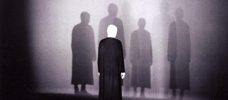
The Last Letter
2002 -

State Legislature
2006
We don’t do comments anymore, but you may contact us here or find us on Twitter or Facebook.



